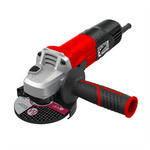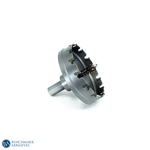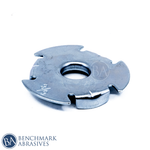
MIG vs Stick vs TIG Welding Process

There are several welding processes, each of which is employed when appropriate. In professional applications, you can observe laser and resistance to cold welding. MIG, TIG, and Stick welding are the three most well-known and often utilized welding processes.
This article describes these three welding procedures from the viewpoints of a hobbyist and a novice welder. You will discover each one, how it works when to use it, and its benefits and drawbacks.
A Few Basic Welding Concepts
Let's quickly go over the essentials before we begin. To link metal pieces together, many types of welding occur. The base and filler metals are melted using an electric arc and electrical resistance to create a welding connection.
Weld pool shielding from atmospheric components like nitrogen and hydrogen is necessary for every arc welding operation. If these ambient substances enter the weld pool, it leads to porosity and cracking. The shielding gas also alters how the filler metal transfers to the joint and how the arc behaves.
Stick arc welding processes are gasless, whereas MIG and TIG need shielding gas. Sticks rely on flux, which burns while releasing a shielding gas to create an enclosed environment surrounding the weld puddle. Stick arc welding leaves slag as a byproduct of the consumed flux, whereas MIG and TIG do not.
Any of these processes needs a closed electrical circuit to operate. While the torch/electrode holder completes the electrical circuit when contacting the metal item, you must fasten a ground clamp. Follow important welding safety tips to perform a successful operation.
MIG Welding Process
The most straightforward welding procedure to master is MIG or GMAW (Gas Metal Arc Welding). Both pros and hobbyists utilize it. In essence, the wire fed during the MIG welding process serves as an electrode and filler metal. The method needs a shielding gas, supports several metal transfer modes, can weld both thick and thin materials, and has a short metal deposition rate.
Metal-arc welding is one of the most popular welding methods. It needs shielding gas but doesn't produce slag. The gas is commonly an Argon and CO2 mixture. However, it can also be pure Argon or pure CO2 if you're welding on a tight budget or want superior arc quality.
Read More: Difference Between Metal Fabrication and Welding
MIG Welding Process: Advantages
- The push/pull approach determines the results, and the welds are straightforward to lay.
- Deeper penetration results from dragging or pulling the pistol away from the metal-deposit area rather than pushing
- MIG welding results in high-strength, attractive welds are requiring no post-weld cleaning.
- Unlike TIG and stick welding, which necessitates frequent pauses, MIG welding can produce continuous welds with no downtime because of continuous wire feeding and shielding gas.
MIG Welding Process: Disadvantages
- One of its drawbacks is the inability to use MIG welding in windy situations. Weld flaws may result from wind easily removing the shielding gas and exposing the weld puddle to the atmosphere. Stick welding and flux core arc welding are preferred in these circumstances.
- MIG welding wire doesn't have enough chemicals to resist impurities like rust, dirt, and grease. Because of this, bright metal should ideally be pre-cleaned before this welding operation. When welding more corroded or dirty metal, the ER70S-6 wire can be helpful because it has more deoxidizers. However, MIG welding cannot weld unclean metal.
Stick Welding Process
Most TIG welders can also do stick welding because both processes utilize a comparable power source. But this procedure is different from TIG. One of the most commonly used welding techniques for both professionals and enthusiasts, it produces more dust but is quicker and costs far less to operate.
Stick welding is more complex than MIG welding but simpler than TIG welding. Stick welder setup is simple, but welding requires practice because you must maintain the arc while the rod is burning.
Read More: Different Types Of Welding Rods
In other words, there is no need for a shielding gas because the stick welding electrode melts while it welds. This acts as filler metal and a source of slag/shielding action. It is a particularly tough welding technique that can weld dirty metal and perform well outdoors. It works poorly with thinner metals and is mostly used for joining mild steel.
Stick Welding Process: Advantages
- SMAW welding equipment is less expensive than MIG and TIG welding equipment.
- It is a process that runs outside because it uses a slag system to protect the environment.
- Rust and other impurities are much more tolerable, but cleaning the metal before welding is always preferable.
Stick Welding Process: Disadvantages
- The welds produced by SMAW are not very attractive, and many spatter and molten globs fall all over the welded object. Therefore, it requires more effort to grind/sand everything and enhances the connection's appearance after welding.
- Chipping and wire brushing to remove slag slow the welding process, especially when multiple-pass welds are necessary.
- Due to the slowness of this welding technique and the frequent consumption of your welding rod, breaks are necessary. As a result, welding is more challenging because you have to tie your welds before continuing.
TIG Welding Process
With TIG welding, unlike MIG, they must manually feed the filler wire into the weld pool by the operator. Of all manual welding techniques, this one is gas-shielded, like MIG, and yields the highest-quality welds. The hardest method to learn is TIG or GTAW (Gas Tungsten Arc Welding), commonly known as Heliarc by veterans. When weld quality and aesthetics are crucial, TIG welding is preferred since it pays welders more on average.
The wire is manually fed during the gas-shielded TIG welding process. Both DC and AC outputs are supported and equipped with inert tungsten electrodes. TIG welding is more difficult and takes longer than other methods. It unites the widest variety of metals and creates the cleanest welds.
TIG Welding Process: Advantages
- The concentrated arc enables much more accurate welding. Additionally, a small HAZ is produced, which makes it simpler to weld thinner metals, although heat input management is still quite difficult.
- Since TIG is a gas-insulated process, slag is not a problem. Additionally, unlike MIG, there is no smoke, sparking, or flying molten metal. This increases the success of critical welds by giving you a complete view of the arc and the weld pool.
- Gas tungsten arc welding can easily join exotic metals and metals with different properties. TIG is the most versatile welding technique since it can join more metals than any other.
- The welds made using TIG are stronger, cleaner, and of superior quality than those made using MIG, flux core, or stick welding.
Read More: Welding Electrodes Classifications and Specifications
TIG Welding Process: Disadvantages
- The TIG welding technique is difficult to master because it calls for the use of the other hand. It frequently requires simultaneous action with the foot on the pedal to adjust the power output.
- Additionally, the tungsten electrodes' thin pin-like arc produces a lot of energy in a condensed space, making it challenging to regulate overheating and metal warping.
- The welded surface needs to be extremely clean due to the delicate nature of TIG welding. No grease, oil, corrosion, or paint is allowed. Adding more effort to the pre-welding stage extends the time it takes to complete the joint.
- Due to the manual feeding of the filler rod and the slower rate of filler metal deposition, the TIG welding process is much slower than the MIG and flux-cored processes.
CONCLUSION
This article provides a broad overview of the main manual arc welding techniques so that you can understand their differences and advantages, and disadvantages. It's usually preferable to start with MIG welding for a total beginner, then go on to stick welding, and lastly, TIG welding.


































































